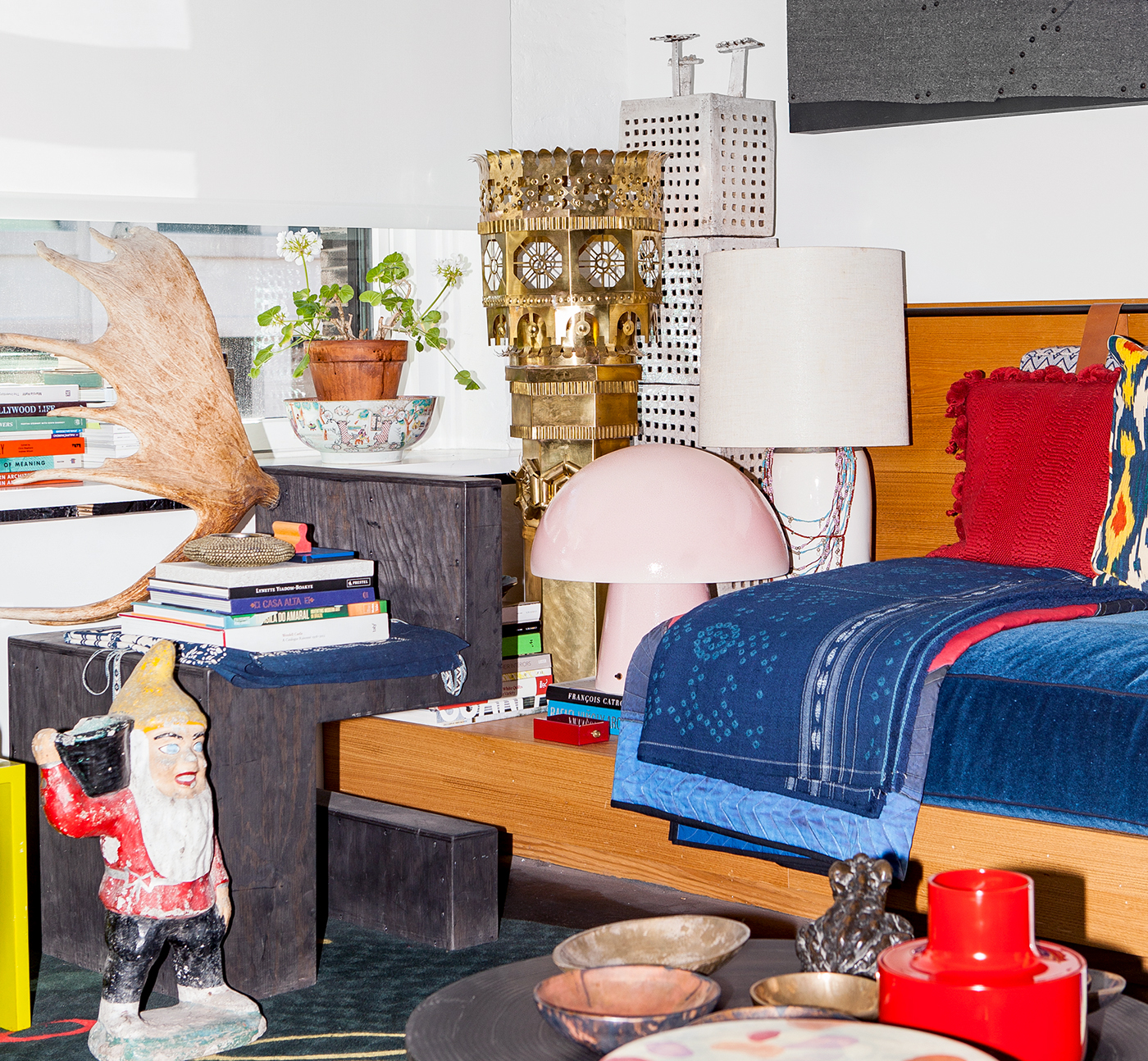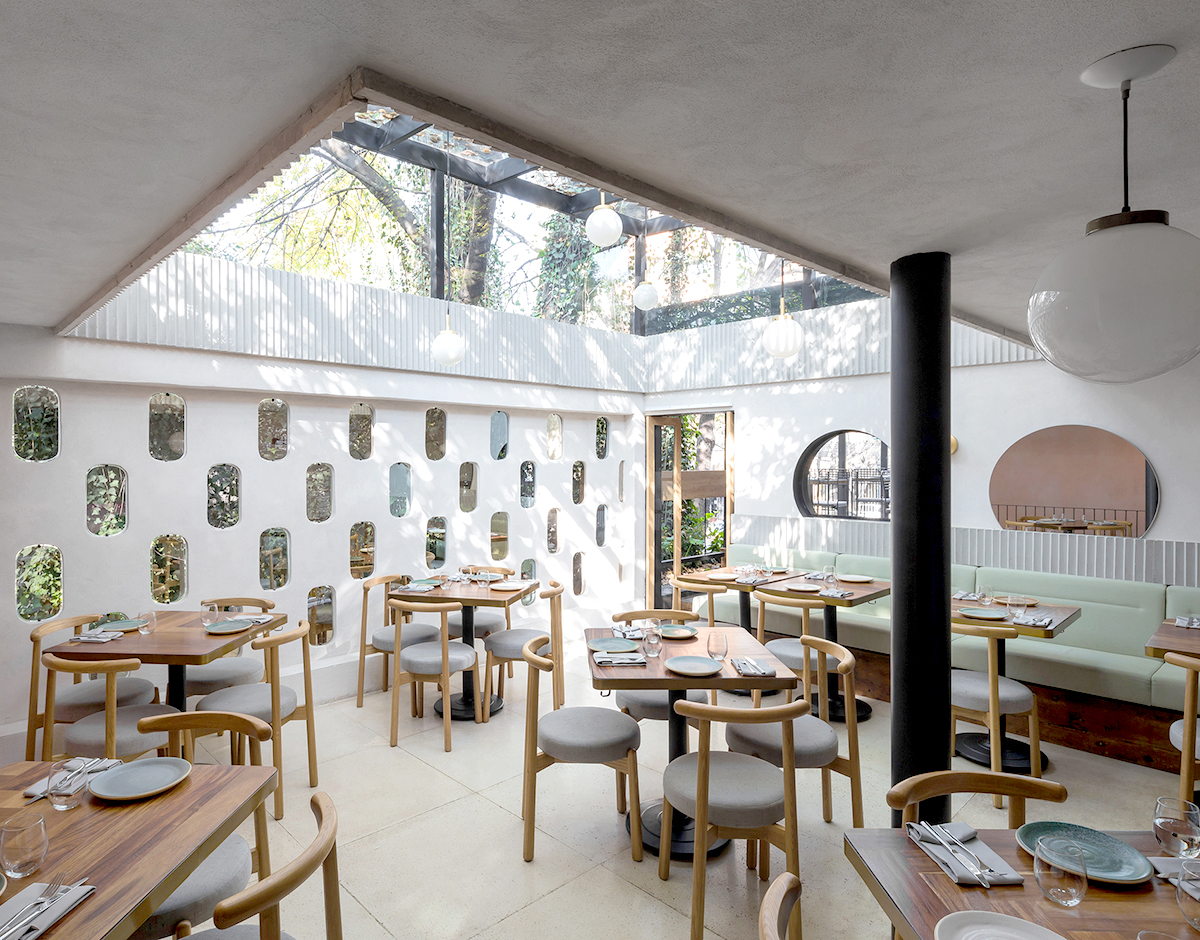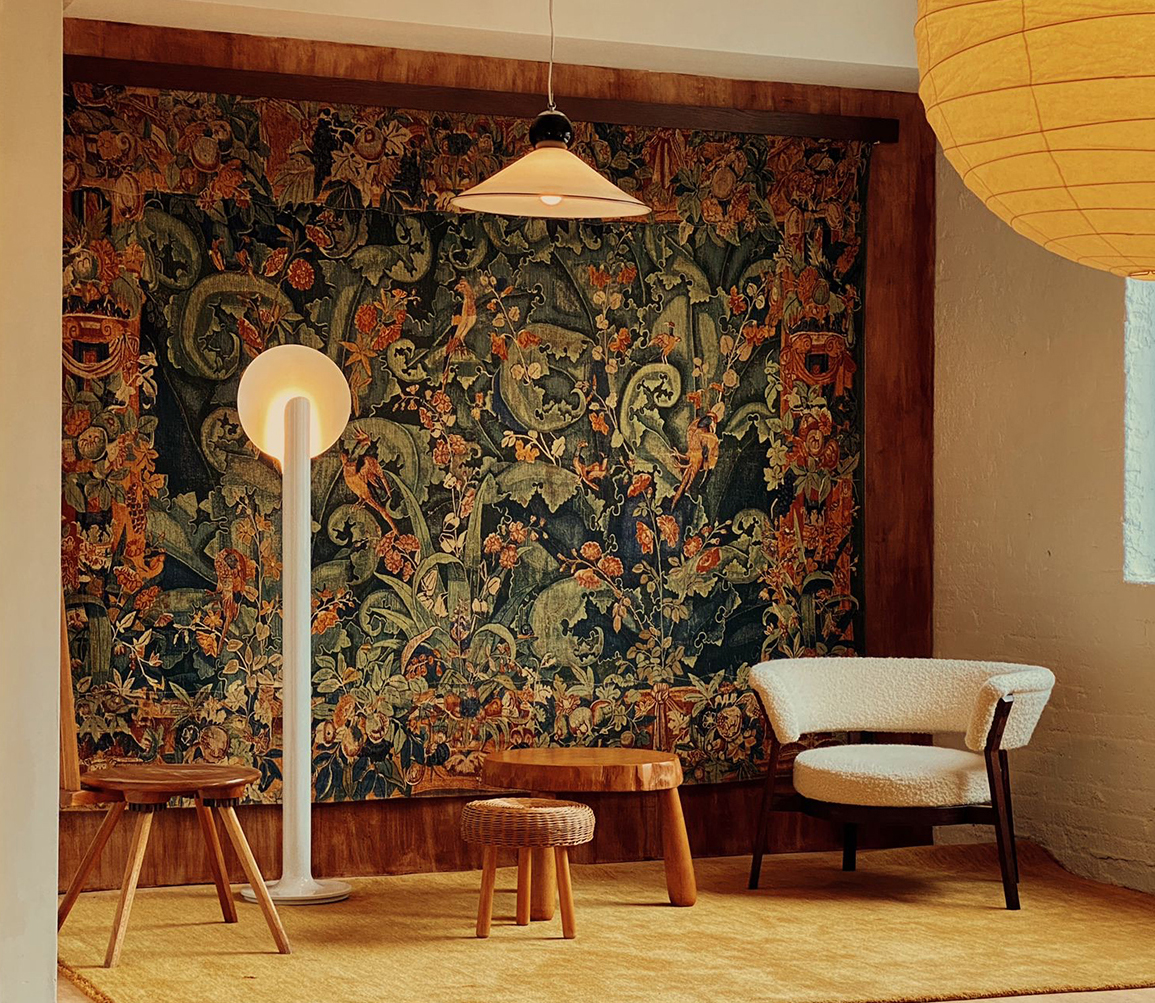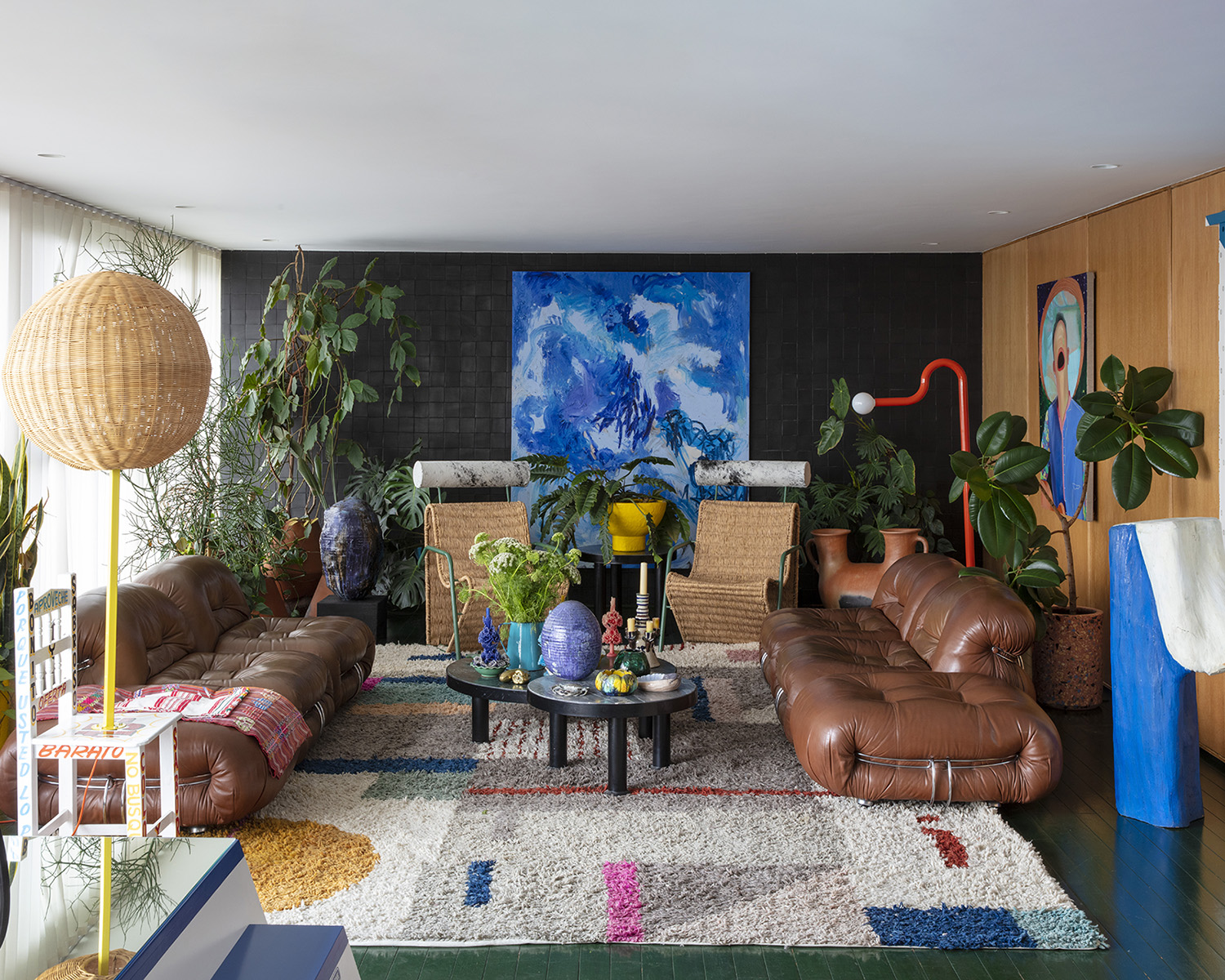
06.19.23
How to Live With Objects
“The Willingness For Something to be Imperfect” — Inside the Mexico City Home of Rodman Primack & Rudy Weissenberg
In honor of our How to Live With Objects pop-up at Nordstrom — whose last day is today! — and to celebrate the six-month anniversary of our book being out in the world! — we’re going to be publishing over the next few weeks some of our favorite home tours from the book that you may not yet have seen. (It is also, we might point out, an excellent time to buy our book if you haven’t already, or gift it to your favorite Gemini, a graduating college student, a dad, a host whose house you’re visiting — truly whatever!)
Next up are two of our favorite actual collectors, Rodman Primack and Rudy Weissenberg. The pair are all over the map, both literally—with houses in Guatemala, Mexico City, and New York—and figuratively, with multiple professional interests that ultimately converge around contemporary design. Primack is a former director of Design Miami and currently runs the textile and interiors studio RP Miller, while Weissenberg, a former television exec, now works in real estate development. Together, the pair founded the design gallery AGO Projects, which is just a short drive from their colorful Mexico City apartment, featured here.
Says Primack: “We started our gallery, AGO Projects, to work with contemporary designers, and to be working for the advancement of new things. From the beginning, we saw that there was an opportunity with this apartment to work with the designers that we were going to work with at the gallery. It gives us a great deal of pleasure to live with pieces that were made for us, and we connect with those pieces because it’s part of this bigger arc of our lives. Yet both of us also really love old things—we were so lucky that Rudy’s grandparents had this incredible set of Soriana sofas (top) — so there’s this moment where the two collide for us. Our vision of the future is not slick. We’re drawn to the idea that new things can also be cozy, and that new things can feel contemporary in spirit but still have traces of real handicraft or artisanal techniques, whether it’s Fabien Cappello’s chairs or the beautiful rug in the living room we commissioned from Agnes Studio.”
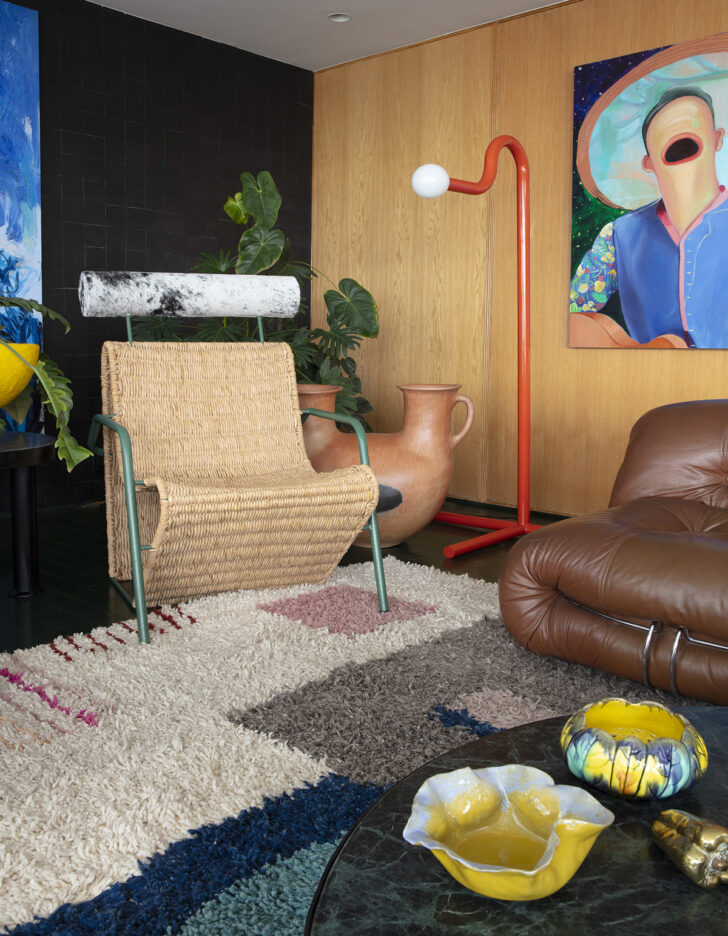
“”The combination of materials in these chairs by Fabien Cappello — with the metal framework, the natural palm fiber, and the pony-skin headrest — is so strange. Postmodern and Memphis-y in some way, yet also tropical. They’re very clearly a part of Fabien’s language, and we were like, ‘We need to have them,’ irrespective of how they were going to look with anything else in the room. That’s part of the philosophy that’s happening here — it all works together, but it also doesn’t matter much to us whether it’s working together.”
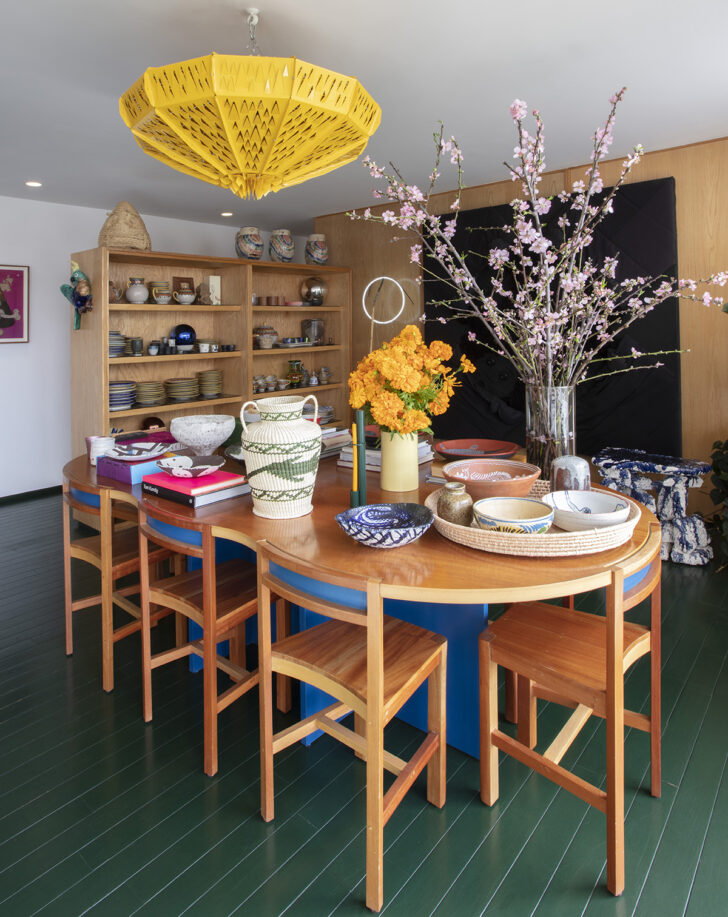
“The dining table, called Dinner for Eight, was a commission for the apartment by Lanza Atelier, who were the subject of our first show at AGO. Theirs was the first real body of work we commissioned. In their work, Lanza tend to add an element of surprise or discovery, almost like a puzzle. People are always surprised at how the backs of the chairs fit perfectly into the top of the table. The scale and proportion are carefully considered to have an economy of material yet total comfort. It mixes a seriousness of design with a lightness of spirit.”
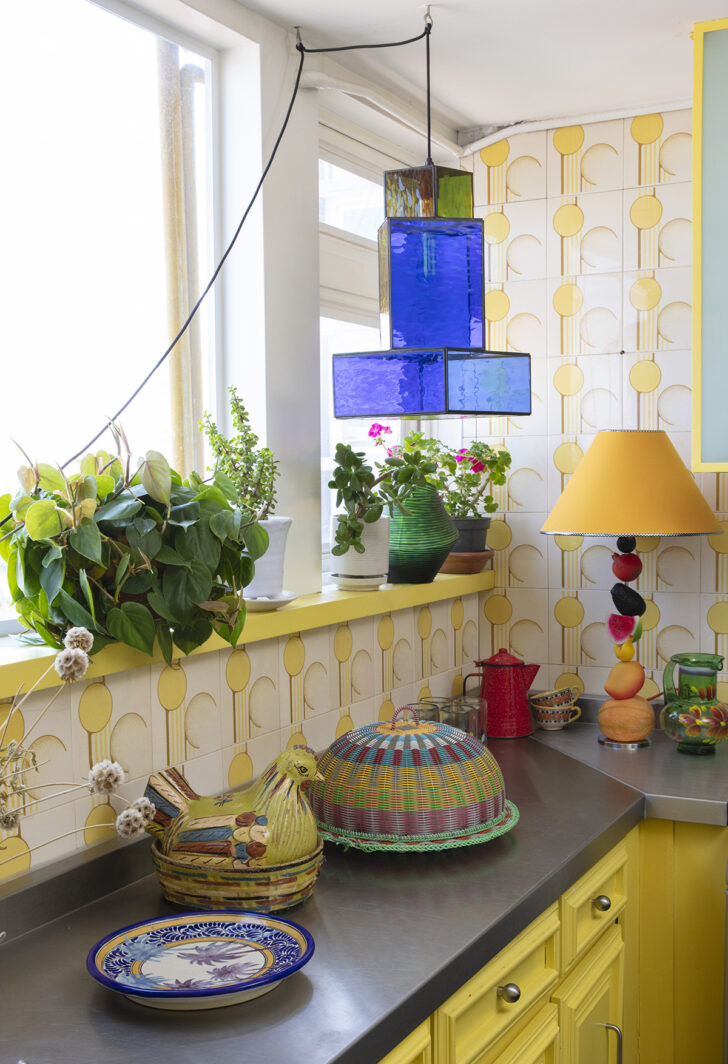
“The chicken in the kitchen is a vintage piece — Mexican Majolica, probably from Puebla — that we had seen at a friend’s house and admired. She moved and gave it to us. It’s probably from the ’50s, and it’s just a wonderful found object. The fruit lamp by Fabien Cappello was developed for a show at AGO, and there’s also a bronze version. We’re not necessarily driven by the ‘importance’ of objects. We’re drawn to things that make our lives more fun and elevate the way we’re living.”
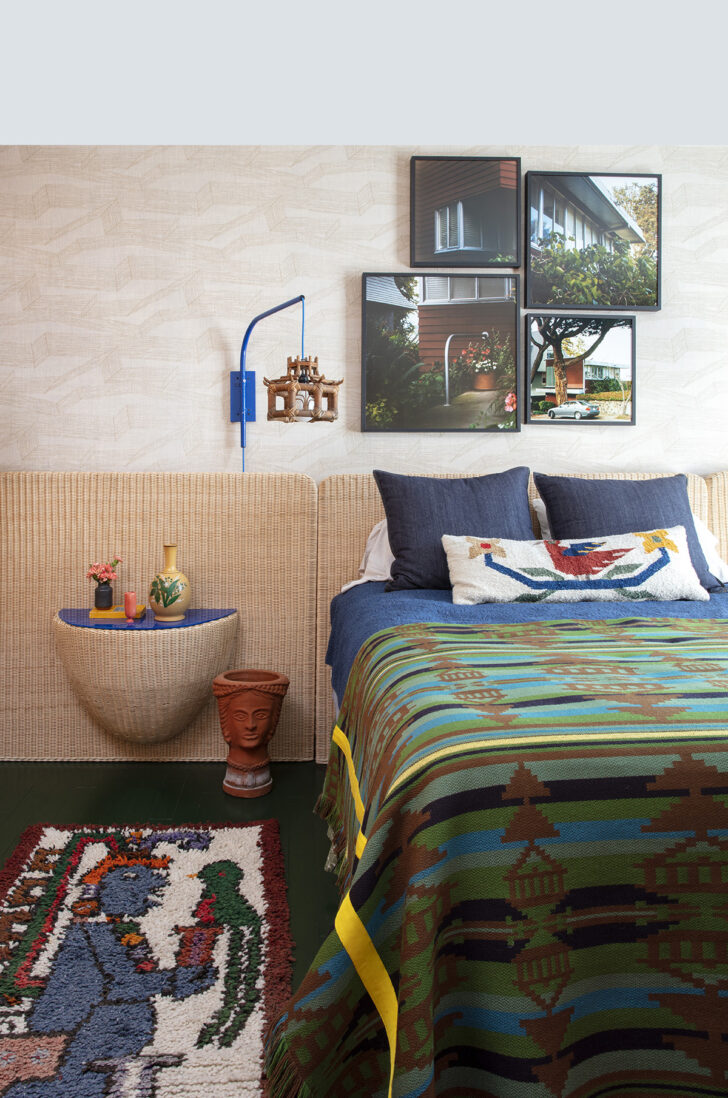
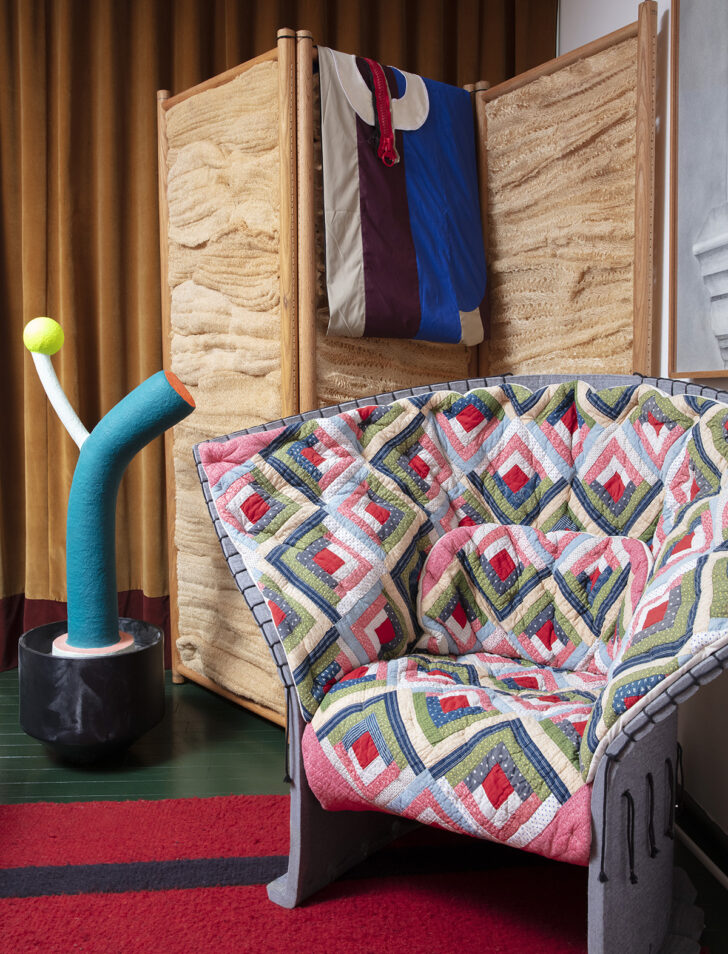
“We both have an underlying desire to be cozy, and the way that we often achieve that is by combining different textural elements. In the guest room, it’s the Fernando Laposse screen with its soft loofah panels, the nubby texture of the Chiaozza sculpture, the vintage rug on the floor, the wicker headboard. All of these things, in our mind, should live together, but it’s almost subconscious. There’s very little of the planning that we do for clients in terms of creating interiors for ourselves. It’s much more accumulative.”
“The Gaetano Pesce chair was a collaboration with Raf Simons that was exhibited and sold at Design Miami/Basel during Rodman s last year as creative director at Design Miami. It’s made from mostly antique, nineteenth-century American quilts, and a lot of quilt lovers would be horrified that they were cut up. But we love that they were given a different life. Rodman has been collecting quilts since he was kid, and we love Raf as a designer, we love Gaetano, so every time we see it, it makes us happy because it represents this moment when all of these pieces of paper were kind of folded on top of each other for us in an exciting way.”
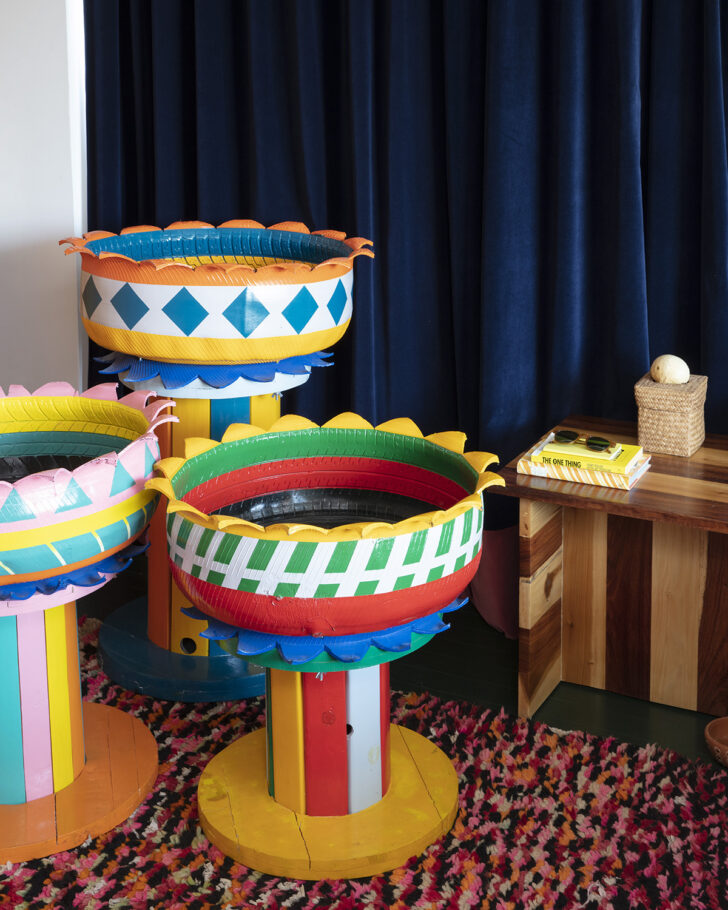
“We love minimalism. It’s totally extraordinary and wonderful to see. But none of our houses have been minimalist, even when the architecture has been very clean. Our houses are just vessels for objects and things.”

“The willingness to be inconvenienced or for something to be imperfect is a big part of our shared aesthetic—not over-art-directing or over-designing something until it no longer has any quirks or soul left. We both are drawn to stuff that feels experimental, that’s not necessarily at its final stage.”
“People have hierarchies around objects, design, and art, but we don’t. Obviously, some things are more ‘valuable’ in terms of the market or in a context outside of our apartment. But we don’t feel like artwork is devalued by having something in front of it that might not speak to it. We don’t want to live in a gallery. In our home, it’s all equally beautiful and it can all kind of jumble together.”
“We have this conversation a lot with people that we’re advising around furniture: If something is coming into your life and you’re panicked about using it, then it’s not worth having. There’s a kind of casualness to our understanding of and approach to stuff. Some of these are beautiful vintage things that show forty, fifty years of age—that’s partly what makes them so beautiful. We have nieces, we have nephews, we have dogs, we have parties—all of it is there to be used and to be part of our life.”
